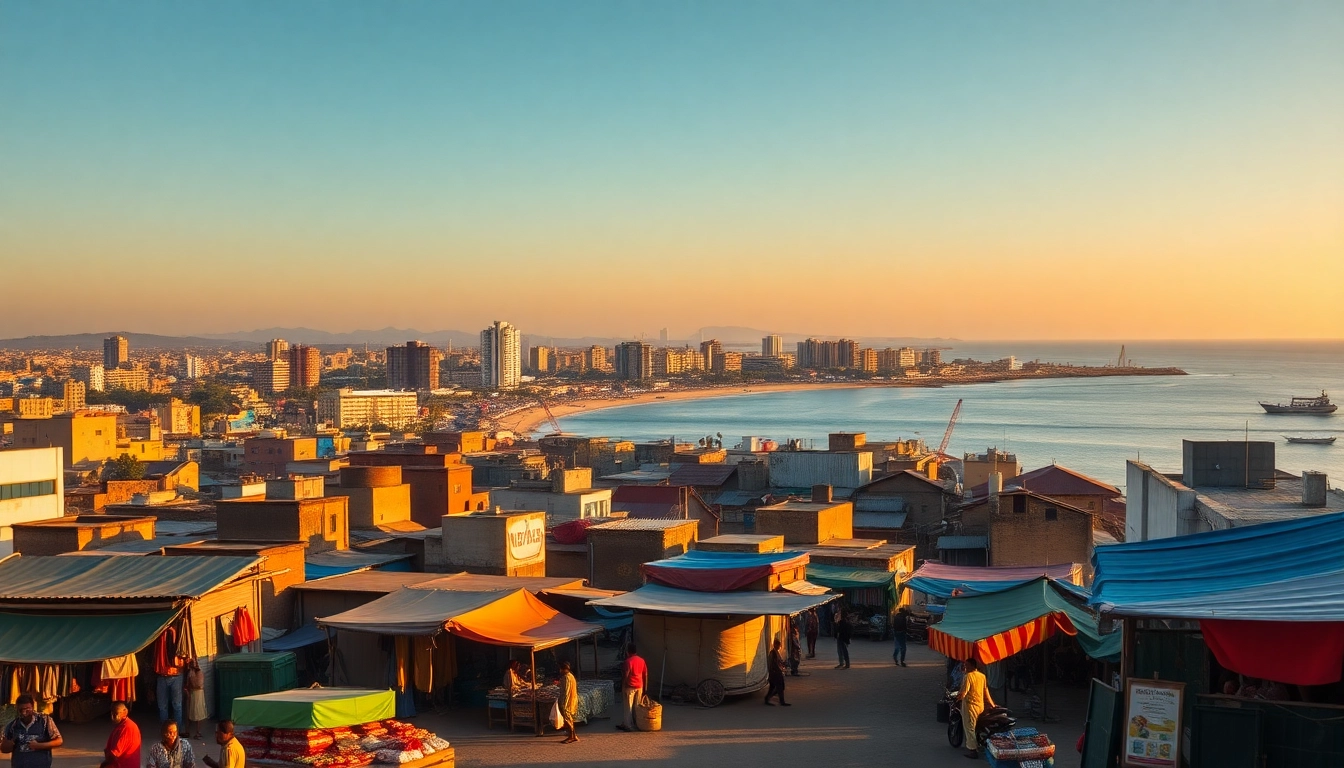Discover Mogadishu km square: A Definitive Guide to the Cityscape

Understanding Mogadishu km square Area
The city of Mogadishu, known as the capital and largest city of Somalia, covers an area of approximately 560 square kilometers (220 square miles). As a critical urban center situated on the Indian Ocean, it embodies a rich tapestry of history, culture, and dynamic development. As one navigates the sprawling neighborhoods and landmarks, the significance of its mogadishu km square emerges, demonstrating how the geographical framework has shaped the lives of its inhabitants over centuries.
Geographical Overview of Mogadishu
Mogadishu lies on the coast of the Indian Ocean in the southeastern part of Somalia. Its geographical coordinates position it strategically, enabling it to serve as a bustling port city and economic hub. The terrain primarily consists of low-lying land and sandy beaches, with vegetation typical of coastal regions. The influence of the ocean is evident in the climate, which showcases a tropical savanna pattern, marked by distinct wet and dry seasons.
Demographics and Population Density
As of recent estimates, Mogadishu boasts a population of around 2.7 million residents, making it one of the densest cities globally with approximately 4,900 individuals per square kilometer. This substantial population density is a reflection of ongoing urban migration and demographic trends, driven by both economic opportunities and challenging conditions elsewhere in the country. The diverse population comprises various ethnic groups, including Somalis, Arabs, and others, contributing to the multicultural atmosphere that defines Mogadishu.
Historical Development of Mogadishu km square
Mogadishu’s history stretches back over a thousand years, earning it the title of being one of the oldest settlements in the region. Explore its historical significance, from its early days as a trading hub in the medieval period to its development under various influences, including Arab and later European colonial powers. The city has witnessed numerous events that shaped its identity, including periods of prosperity driven by trade, and critical challenges, notably civil conflict in the late 20th century, profoundly impacting its urban landscape.
Key Landmarks within Mogadishu km square
Cultural and Historical Sites
Within the geographical confines of Mogadishu, various cultural and historical landmarks tell the story of the city’s rich heritage. One significant site is the Mogadishu Cathedral, an iconic building that represents the city’s colonial history and architectural style. Other important cultural sites include the Old Port, which highlights the city’s historical significance as a maritime trade hub, and the Arba’a Rukun Mosque, known for its beautiful architecture and cultural relevance.
Modern Infrastructure and Developments
The revitalization of Mogadishu has led to significant investments in modern infrastructure. New roads, bridges, and buildings are emerging, reflecting the city’s efforts to upgrade its urban environment. Notably, the Sahafi Hotel and the Mogadishu Mall have become symbols of a contemporary urban lifestyle, serving both local residents and expatriates. These developments foster economic growth and improve the quality of life for Mogadishu’s inhabitants, enhancing its standing as a central player in the Horn of Africa.
Parks and Recreational Areas in Mogadishu
Despite its urban challenges, Mogadishu offers some recreational spaces for its residents. The seaside promenades along the coast provide opportunities for relaxation and leisure activities, with local families often visiting the beaches for social gatherings. Initiatives to restore parks and public spaces have emerged, aimed at improving access to green areas and fostering community well-being within the densely populated areas of the city.
Economic Activities Around Mogadishu km square
Trade and Commerce Trends
Mogadishu plays a pivotal role in Somalia’s economy, with its port being a critical entry point for imports and exports. Trade activities are thriving, particularly in the sectors of textiles, food, and livestock. The city is also reinventing itself as a center for entrepreneurship, showcasing increased activity in retail, technology, and services. The marketplaces, bustling with vendors and buyers, reflect the vibrancy of local commerce and the resilience of its population.
Employment Opportunities
With urban growth comes the promise of job creation. The expanding sectors in Mogadishu, such as construction, hospitality, and services, are generating a variety of employment opportunities for the local population. While challenges remain regarding formal employment, informal economies play a crucial role in providing vital income sources for many families. Skill development initiatives are increasingly being introduced to enhance job readiness and equip residents with essential skills for the evolving job market.
Impact of Tourism on the Local Economy
The potential for tourism in Mogadishu is gradually gaining recognition, contributing to the local economy. Significant cultural heritage sites and natural beauty attract international travelers, despite the city’s complex past. Investment in tourism infrastructure, such as hotels and tour services, is critical to ensure that Mogadishu can safely and effectively welcome visitors. The social and economic benefits of promoting tourism can bolster community pride and foster further development initiatives.
Environmental Features of Mogadishu km square
Coastal and Marine Ecosystems
Mogadishu’s coastal region is characterized by rich marine biodiversity, providing essential resources for local fishing communities and contributing to the region’s ecological health. The local government and NGOs are increasingly engaged in efforts to protect these marine environments through sustainable practices, seeking to balance economic needs with environmental stewardship. The coastal ecosystems are crucial for maintaining fish populations and supporting livelihoods reliant on fishing.
Urban Planning and Green Spaces
Urban planning initiatives are key to enhancing the livability of Mogadishu. Efforts to integrate green spaces into the urban landscape are gaining traction, aiming to mitigate the impacts of rapid urbanization. Projects that focus on eco-friendly construction and the creation of parks enhance the urban experience for residents, promoting sustainability while providing much-needed recreational areas.
Challenges Facing the Environment
Despite advancements, Mogadishu grapples with various environmental challenges, including waste management and pollution. Rapid urbanization often leads to inadequate infrastructure for waste disposal, impacting the health and well-being of residents. Initiatives aimed at improving waste management systems, environmental education, and community engagement are essential steps toward resolving these pressing issues and promoting a cleaner, healthier city.
Future Developments in Mogadishu km square
Urban Expansion and Planning Initiatives
The future of Mogadishu is marked by ambitious urban expansion and planning initiatives aimed at accommodating its growing population. Comprehensive urban planning strategies that focus on sustainable development can help manage growth effectively and create a more organized urban landscape. Stakeholder engagement in these initiatives is crucial to ensure that residents’ voices are included in planning efforts, promoting cohesive development that meets community needs.
Investment Opportunities and Challenges
Mogadishu presents numerous investment opportunities across various sectors, driven by ongoing recovery and urban development. However, challenges such as political instability and infrastructural deficits remain. Strategies that involve public-private partnerships can facilitate investments that unlock Mogadishu’s potential, provided there is a commitment to creating a stable and conducive environment for businesses.
Community Engagement in Development Projects
Community engagement plays a vital role in the development of Mogadishu. Initiatives that involve local voices in the planning and execution of projects can lead to more sustainable outcomes. Encouraging participation not only ensures that development aligns with community needs but also fosters a sense of ownership and responsibility among residents. Programs aimed at educating the populace about urban planning and economic opportunities can empower communities to play an active role in shaping their environment.






